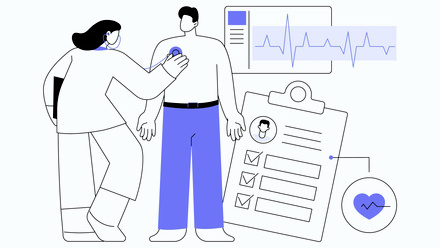How to use collaborative tools to understand reward needs
This may explain findings from YouGov in 2017 which showed that, while 93 per cent of managers say they care about their staff, only 52 per cent of employees agreed – and almost a quarter actively disagreed. That’s a wide perception gap and one that could be having a real impact on your employees’ wellbeing.
The range of benefits that can be offered to staff is huge. When the type of benefits available are as diverse as flexi-time, mental health services, private medical insurance or money back on health care services, it can be hard to know where to start and what is going to have the biggest impact.
Indeed, our research shows that seven out of every 10 businesses don’t calculate the return on investment for their healthcare benefits spend.
Gaining insight on benefit needs
Fortunately, there are many tools available to help HR teams understand what’s going to make a difference to their teams, and also to help them track the impact of their efforts. Digital forums, blogs or polls offer employees an anonymised way to feedback on what they consider the current issues to be and what they would like to see in place. This type of insight gives HR teams a clear starting point and end goal to build their strategy around.
If you have a digital literate workforce, it’s generally preferable to keep your internal communications on wellbeing to a digital sphere. A team which spends a good amount of time per day at a computer is more likely to engage with online surveys. Conversely, a manual workforce might respond better to a more old-fashioned approach, such as notice board messaging or paper surveys.
Employee benefit providers also need to produce meaningful insights into product usage, which employers can link back to their absence statistics and overall employee wellbeing.
Digital innovations
Devices are already able to quantify and improve our wellbeing in the form of yoga and meditation apps, wearable fitness trackers and virtual therapists – and this kind of technology will play a key role in improving workplace health in the future. For example, this year we launched Thrive – a clinically-proven app which helps prevent, detect and manage common mental health conditions and helps to build resilience in employees. Using an app like this is an ideal first step to help people understand and take control of their mental health; it’s readily available, private and delivered on a familiar platform – a mobile phone or tablet.
As products increasingly become available on digital platforms, there is the opportunity to become more proactive in identifying needs and providing the correct pathways for treatment. Businesses can use high level management data to identify trends within their organisation, which can be supplied by third party benefits providers. By gaining access to usage reports and key insights, businesses can be equipped with the insight needed to tailor their benefit strategy in line with employee needs.
For example, if a business knows that its volume of work spikes in a certain month and it can also see that use of mental health support services increases correspondingly, steps can be taken to upscale the workforce to alleviate pressure. For an employer, understanding that a large proportion of the workforce is suffering could lead to an agreement to offer a support service, improve a wellbeing strategy or offer flexible working to help address the issue and re-engage the workforce.
We estimate the return on investment for focusing on mental health to be 1:9. By using tools to see what your current employee health picture looks like, and then turning that intelligence into an ongoing benefit strategy, your business could be set to make large financial savings by reducing absence, presenteeism and staff turnover. The opportunity is there – why wait?
To read more about the cost impact of mental health on your business, what you can do to combat this and how providing tailored employee support can positively impact your bottom line, download our eBook.
The author is Jennie Doyle, head of product and marketing at Health Shield.
This article was provided by Health Shield.
Supplied by REBA Associate Member, Health Shield
At Health Shield we're passionate about improving people's everyday health.







